| Femmes Fatales | Dec 11 2021 |

Why so serious, darlings? I'm on my third divorce, and if I can laugh so can you.

The above photo from the mid-1950s shows Hungarian star Zsa Zsa Gabor, whose films included Moulin Rouge, Death of a Scoundrel, Drop Dead Darling, Touch of Evil, and of course, Queen of Outer Space, which we talked about here. What was really funny about Gabor is that she would eventually total seven divorces. It could be a Hollywood record.
*checking internet*
Nope. Lana Turner beat her with eight, and Elizabeth Taylor and Mickey Rooney both tied her with seven. Gabor, however, also had an anullment. So she ditched eight hubbies. Well, merrily, merrily, merrily, merrily, life is but a dream, and considering she reached age ninety-nine, maybe she knew more about living than all of us. You see her below from the same shoot, contemplating another marriage proposal.
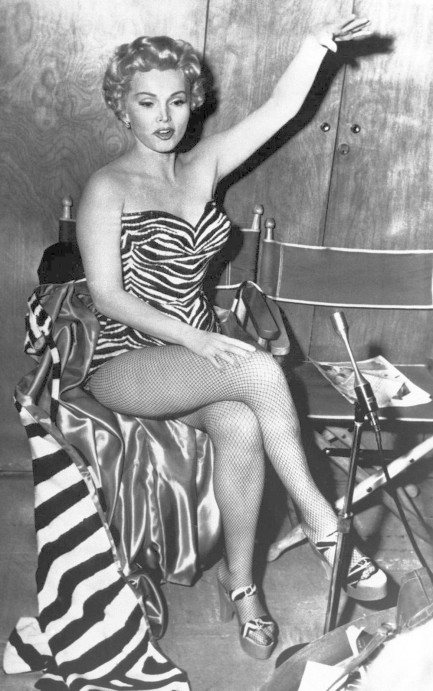

| Vintage Pulp | Jun 8 2018 |

Lawless border town brings out the worst in its inhabitants—and in its screenwriter too.
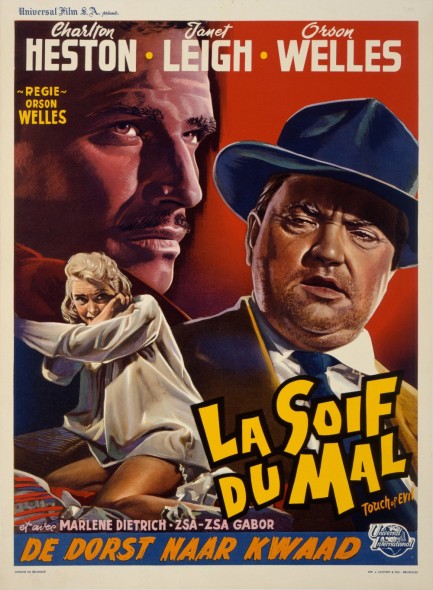
We've shared some promos from the Orson Welles film noir Touch of Evil before. Those were worthy efforts, but we think this Belgian poster is the best. We don't have a Belgian release date but we can guess at one. The movie premiered in the U.S. in early 1958, then crossed to Europe during the summer, with premieres in the UK in April and France in June—in fact today. The film won the FIPRESCI (Fédération Internationale de la Presse Cinématographique) Prize at the Brussels World Film Festival that year, which was held from April 21 through June 13, but we think the movie showed after its French premiere. So we're guessing sometime between June 8 and June 13 for its Belgian unveiling.
So about the film. We've hinted at this, but now we'll come out and say it: It isn't as good as many claim. Award winner, yes, but one that hasn't aged well. Visual masterpiece with numerous breathtaking shots, certainly, but one in which the script (written by Welles) lacks narrative logic. We could choose a dozen examples of this problem, but we'll give you just one. Early in the film Janet Leigh, who's married to a cop and thus shouldn't be naive, allows herself to be led down dark streets by an unknown male at four o'clock in the morning. And she does this in a Mexican border town Charlton Heston describes as “bringing out the worst in people,” which we can assume to mean “not safe.” Leigh traipsing off into the unknown with an obviously dodgy character is absurd. The movie lost our girlfriends at that point. "Oh, come on!" was the general sentiment.
So about the film. We've hinted at this, but now we'll come out and say it: It isn't as good as many claim. Award winner, yes, but one that hasn't aged well. Visual masterpiece with numerous breathtaking shots, certainly, but one in which the script (written by Welles) lacks narrative logic. We could choose a dozen examples of this problem, but we'll give you just one. Early in the film Janet Leigh, who's married to a cop and thus shouldn't be naive, allows herself to be led down dark streets by an unknown male at four o'clock in the morning. And she does this in a Mexican border town Charlton Heston describes as “bringing out the worst in people,” which we can assume to mean “not safe.” Leigh traipsing off into the unknown with an obviously dodgy character is absurd. The movie lost our girlfriends at that point. "Oh, come on!" was the general sentiment.
The truth is Touch of Evil flirts dangerously more than once with being laugh out loud silly. Dennis Weaver's motel desk worker is Norman Bates from Psycho two years earlier, several degrees twitchier, and immeasurably hammier. Even the staging of the film is bizarre at times, with various characters required to physically orbit the central action so they can be glimpsed or encountered at just the right moment. We know, we know—our complaints are total sacrilege. Don't get us wrong. The movie is still entertaining, but people who call it a masterpiece have decided to overlook Welles' screenplay. And generally these people will also call you stupid for disagreeing with them, so be prepared for that. But don't take our word on Touch of Evil. Watch it and see what you think. And if you're interested, we discussed other aspects of the film a while back here.
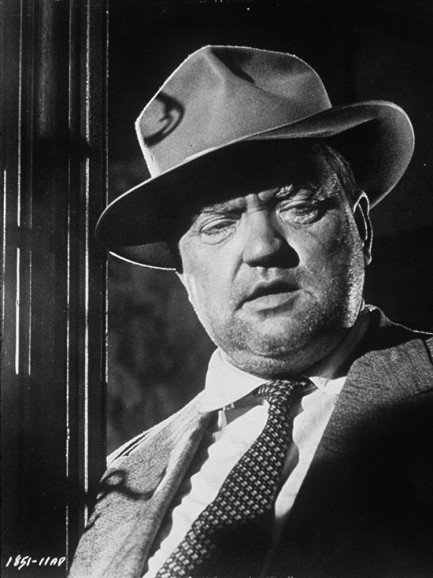
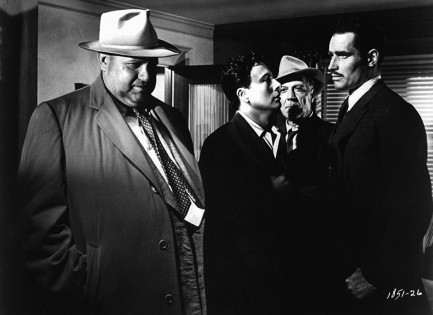
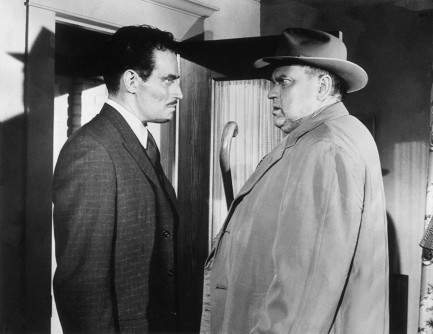
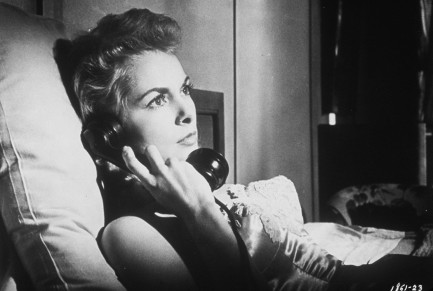
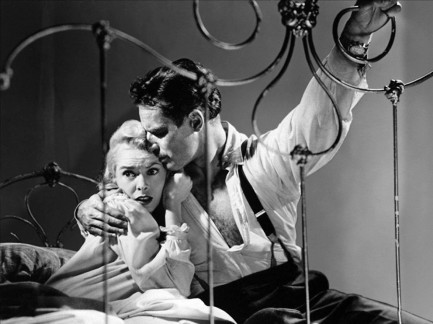
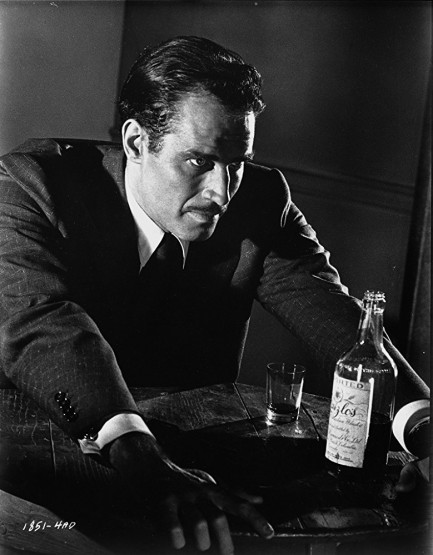
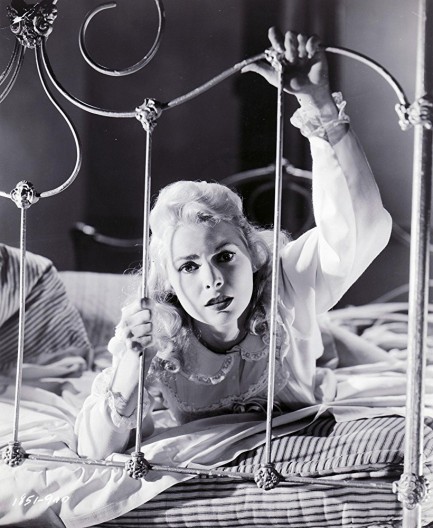
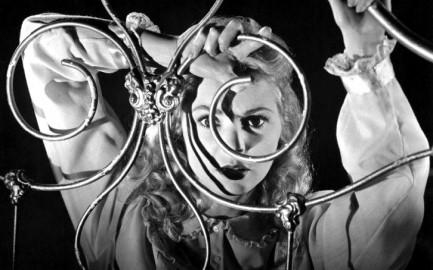
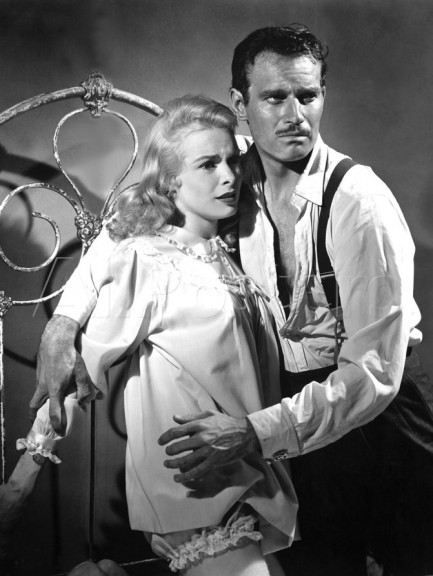
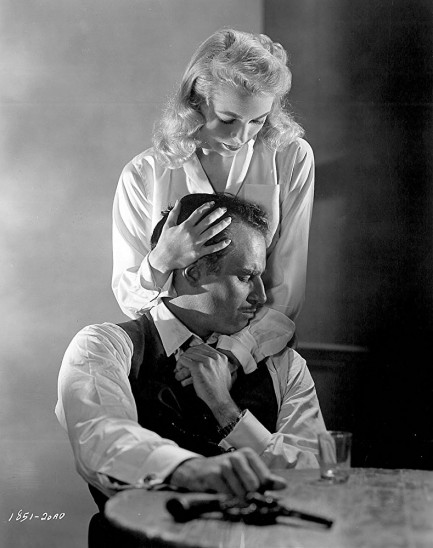
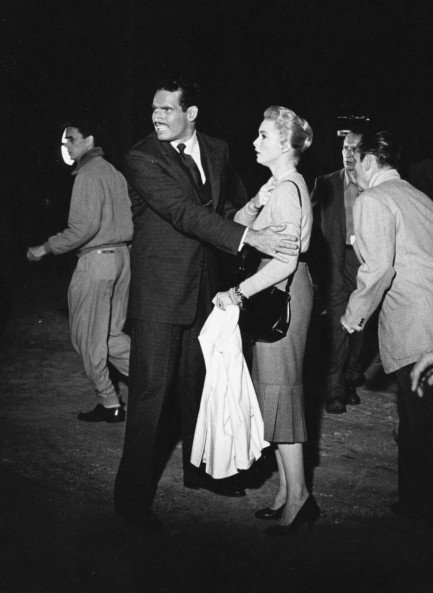
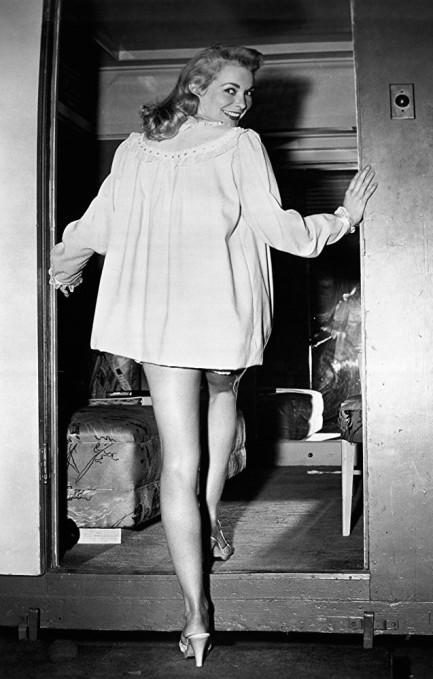
| Femmes Fatales | Mar 29 2018 |

Happiness is to age well in Hollywood.
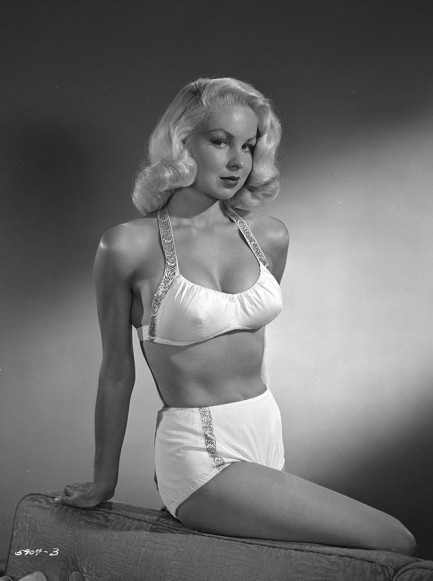
Joi Lansing was born Judy Rae Brown in Salt Lake City, Utah, and could be the best thing ever produced by a state famous for its natural beauty. While she appeared in the film noir Touch of Evil, as well as on scores of television shows, she can't be said to have achieved major stardom. However she had a long career owing partly to the fact that she didn't seem to age—quite a useful trick in Hollywood. Despite that, don't believe it when you see other sources claim the above photo was shot in 1959. She had good genes, but not quite that good. The shot is from 1956, when Lansing was twenty-seven.
| Musiquarium | Aug 18 2013 |

Touch of Evil sleeve art perfectly captures the film's mood.
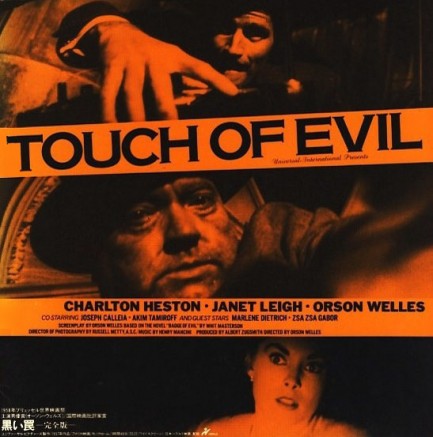
Above, a Japanese soundtrack sleeve for Orson Welles’ lauded 1958 post-noir thriller Touch of Evil, with music from Henry Mancini. Top marks for the beautiful design on this.
| Vintage Pulp | Jan 22 2011 |

A deep feeling of Welles’ being.
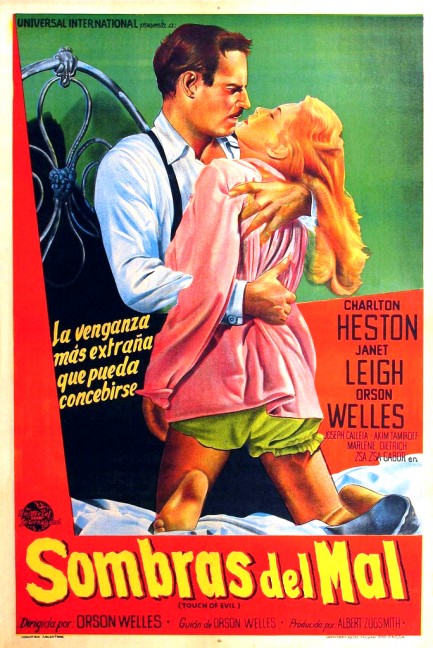
Above, a Spanish-language poster for Orson Welles’ classic noir Sombras del Mal, which would translate to “Shadows of Evil”, instead of what the film was really named—Touch of Evil. Welles’ later-period noir is considered by many critics to be a masterpiece, as well as the last true noir ever made. We may talk about the film more a bit later. It premiered in Spain today in 1962.
| Vintage Pulp | Oct 14 2009 |

Orson Welles makes a run to the border.
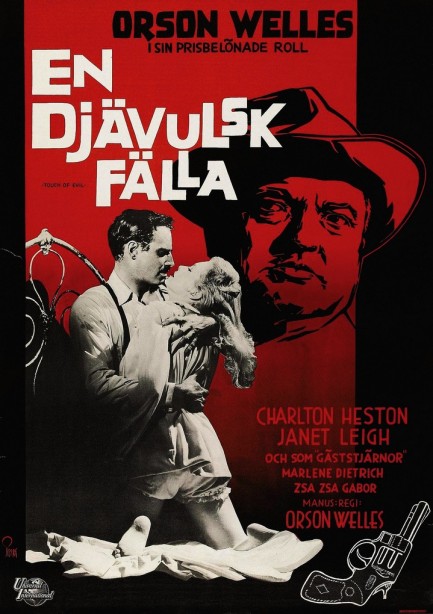
It has the most famous one-take tracking shot in cinema history, it’s the last of the official film noirs (unless you’re one of those Kiss Me Deadly purists), and it was directed by distinguished filmmaker Orson Welles. It was called Touch of Evil, and above you see its moody Swedish laguage poster. Though the film has its flaws, the technical prowess on display is indisputable. At this point film noir was a well-charted phenomenon in which Welles had already dabbled when he made Lady from Shanghai and The Stranger. This time out, he wanted to fully explore the possibilities of shadow the way a painter might explore the possibilities of oils. Everyone knew black-and-white was on the way out. Touch of Evil was Welles’ commentary on the style. He was showing the world what was possible, and by extension, what might be impossible using color.
The casting of Charlton Heston as Ramón Miguel Vargas has been thoroughly discussed pretty much everywhere, and those criticisms are understandable. Certainly, an actor such as, say, Ricardo Montalbán would have shone where Heston merely sufficed, but 1958 audiences would have disliked lily white Janet Leigh being hooked up with an actual Latino actor. People overlook that when they criticize Heston's casting. Welles made a racial statement by swapping the ethnicities of the central couple from Whit Masterson's source novel, in which the cop was white and his wife was Mexican. That's as far as he was willing to go. Cinema mirrors the age in which it was produced. It’s okay to use our modern world as a prism through which to examine the circumstances around an old film, but it’s best do so respectfully, because somewhere in the future people with their own prisms will be looking upon our age, and it won’t look so good to them. Touch of Evil played in Sweden for the first time today in 1958.
The casting of Charlton Heston as Ramón Miguel Vargas has been thoroughly discussed pretty much everywhere, and those criticisms are understandable. Certainly, an actor such as, say, Ricardo Montalbán would have shone where Heston merely sufficed, but 1958 audiences would have disliked lily white Janet Leigh being hooked up with an actual Latino actor. People overlook that when they criticize Heston's casting. Welles made a racial statement by swapping the ethnicities of the central couple from Whit Masterson's source novel, in which the cop was white and his wife was Mexican. That's as far as he was willing to go. Cinema mirrors the age in which it was produced. It’s okay to use our modern world as a prism through which to examine the circumstances around an old film, but it’s best do so respectfully, because somewhere in the future people with their own prisms will be looking upon our age, and it won’t look so good to them. Touch of Evil played in Sweden for the first time today in 1958.




































































